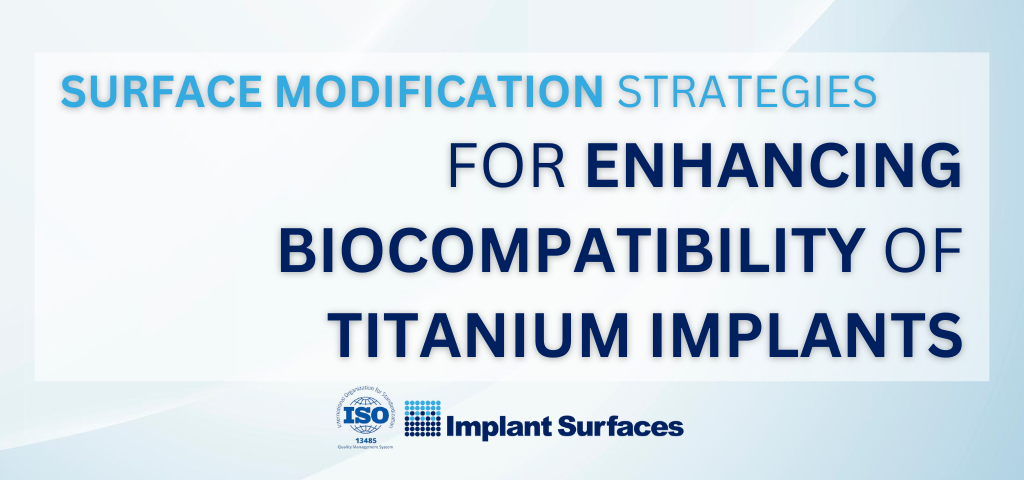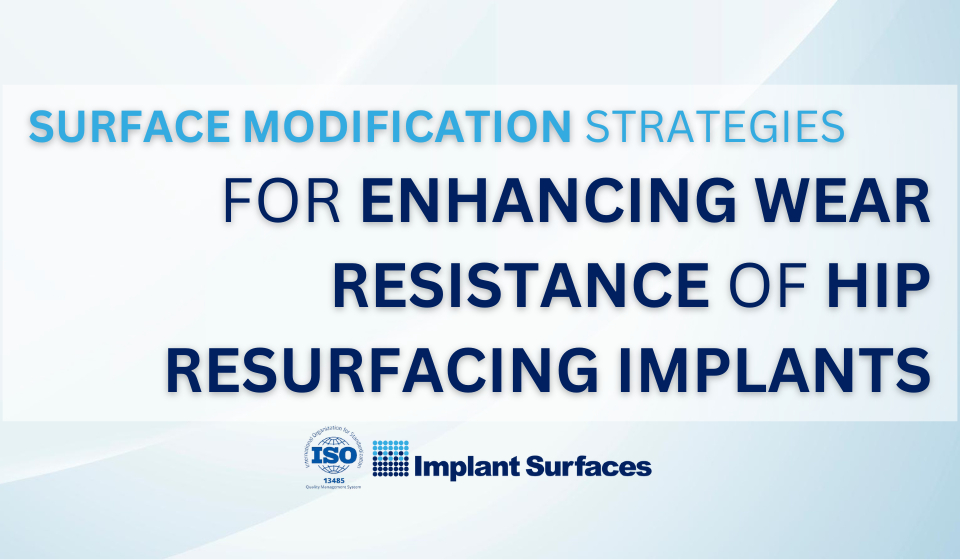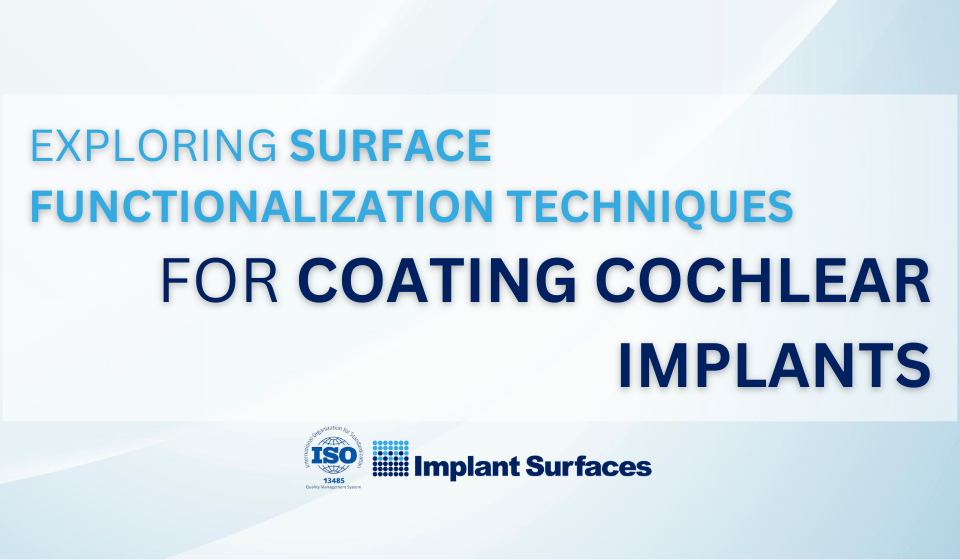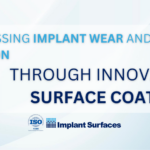
Innovations in Surface Coatings: Addressing Implant Wear and Friction
April 30, 2024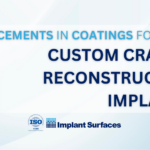
Advancements in Coatings for Custom Cranial Reconstruction Implants
May 1, 2024Titanium implants have revolutionized the field of orthopedics and dentistry, offering unmatched durability and biocompatibility. However, to further enhance their performance and integration with the host tissue, surface modification strategies have emerged as a promising avenue of research and development. In this article, we delve into the various techniques and technologies employed to optimize the biocompatibility of titanium implants.
Surface Roughening:
One of the primary approaches to enhance the biocompatibility of titanium implants is through surface roughening. By introducing controlled micro- and nano-scale roughness, the effective surface area for osseointegration is increased, facilitating stronger bone-implant bonding. Techniques such as sandblasting, acid etching, and anodization have been employed to achieve the desired surface topography, promoting cellular adhesion and proliferation.
Bioactive Coatings:
Bioactive coatings play a pivotal role in promoting osseointegration and accelerating the healing process around titanium implants. These coatings, often composed of hydroxyapatite or bioactive glasses, mimic the composition of natural bone, thereby stimulating bone regeneration and integration. Through techniques like plasma spraying or sol-gel deposition, bioactive coatings can be precisely applied to the implant surface, fostering a biological response conducive to implant stability and longevity.
Functionalization:
Surface functionalization involves modifying the chemical composition of titanium implants to impart specific biological properties. By grafting biomolecules or peptides onto the implant surface, cellular interactions can be tailored to promote tissue integration and reduce inflammatory responses. Strategies such as plasma treatment, chemical vapor deposition, and self-assembled monolayers enable precise control over surface chemistry, facilitating enhanced biocompatibility and tissue regeneration.
Antimicrobial Strategies:
In addition to promoting tissue integration, mitigating the risk of implant-related infections is crucial for the long-term success of titanium implants. Antimicrobial strategies aim to inhibit bacterial colonization on the implant surface, thereby minimizing the likelihood of peri-implant infections. Silver nanoparticles, antimicrobial peptides, and antibiotic-eluting coatings are among the innovative approaches used to impart antimicrobial properties to titanium implants, safeguarding patient health and implant functionality.
Conclusion:
Surface modification strategies represent a frontier in the optimization of titanium implant biocompatibility. By harnessing techniques such as surface roughening, bioactive coatings, functionalization, and antimicrobial strategies, implant surfaces can be tailored to promote osseointegration, reduce complications, and enhance patient outcomes. As research continues to advance in this field, the future holds promise for further innovations aimed at improving the performance and longevity of titanium implants in orthopedic and dental applications.

